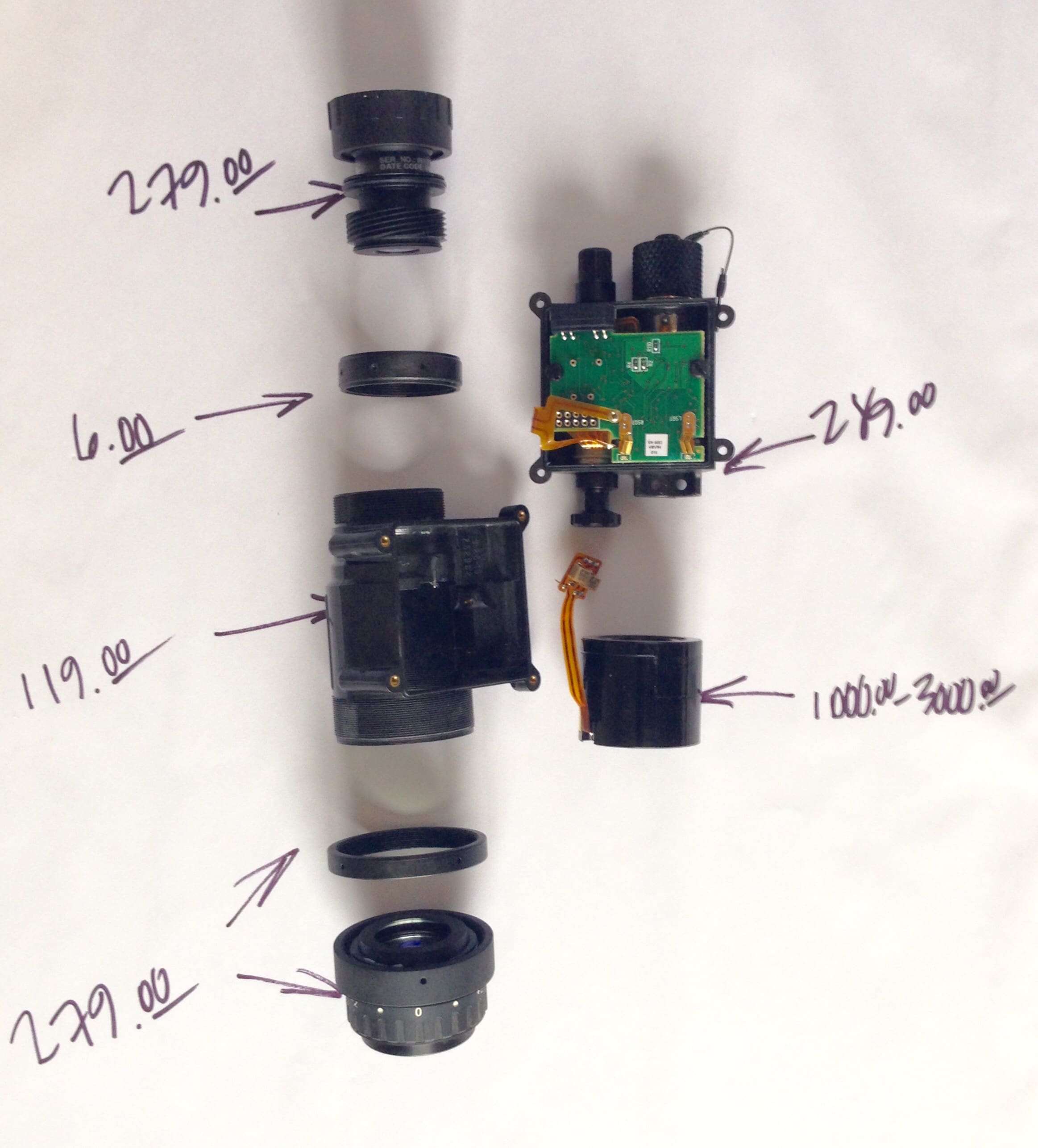Continuing with the the previous week’s narrative of use, potential modularity and general candidacy of the PVS-14 as a modular and scalable night vision device, a simple crayon explanation should be used as a common example of the device.
Modifying or upgrading a device needs to begin with understanding it, the key components, how they bind the device together, what they do, and what the practical cost are. As stated correctly, “the enemy of better is good enough”. This is a statement that needs to be regarded and examined thoroughly.
The enclosed image is a poor mans exploded view of the key components of the PVS-14 monocular with relative commercial costs referenced. These costs are general and vary with the source and quantity, but were taken from the web today for a baseline reference. In this reference, please take a look at which articles drive major costs, are key features (or should/should not be) and may be potentially focus items for enhancement. Several items such as screws, o-rings and lens caps have been deleted for discussion.
As you can see, many components on the PVS-14 are relatively inexpensive, although critical to its performance. Selective replacement of components can result in increased performance for a fraction of the cost of a new system. In the image you can clearly divide the components into electrical (typically serialized and complex) and non-electrical (less expensive and generally user adjustable).
By comparison, the M4 rifle is a solid although different technology. It has evolved from the M16A1 into recent form, then resulted into numerous sub-versions in the past few years. When the M16 service version was fielded, the key (not initial) improvements which drove the rifle into its changes of calibers, accuracy/ammunition improvements were highly influenced by a key addition.
Night Vision Redux is a weekly series prepared with the assitance of DEP, the US subsidiary of Photonis. It is intended to educate readers about image intensification (I2) systems and ways they can be upgraded without having go purchase comoletely new systems.



I built one with a blemished tube for $1100. Not that anyone would use a blemished tube for professional work but for hiking at night it works great.